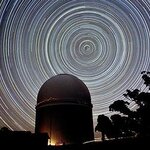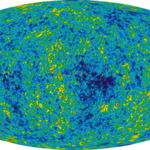Science History

In popular culture the Greek Muses are seen as representations of artistic inspiration. Writers, and especially poets, are keen to express their mysterious source of insights as a territory inhabited by their muse. Dante, feeling fragile and forlorn as he enters the Inferno laments, “O Muses, O high genius, aid me now!” This may all seem a bit of classical allegory; harmless but slightly anachronistic for our age. However, I think the Muses are symbols of something far more important.
Let's firstly look at a list of the nine Muses and their respective arts:
Calliope - Epic poetryClio -…

This link will bring you to my live Podcast video to an introduction to true ancient Bonsai . It is called "Bonsai Lesson #1"

You're living as part of a small band of hunter-gatherers 30,000 years ago in what will later become France. How do you explain the fact that a stone, when dropped, falls to the earth? How do you even begin to think about gravity?
People sometimes wrinkle their noses when, in the context of explaining the meaning of the word 'theory' in science, you talk about the 'theory of gravity'. Gravity is a fact, isn't it? But from our 21st century perspective, we take too much of 2000 years of theoretical developments for granted. So try to imagine how you would even begin to think about gravity if…

With the first decade of the millennium coming to a close, it is time to take stock. What have 'The Noughties' brought us in terms of scientific advances?
Some remarkable scientific discoveries were made in the last ten years. As I don't have the illusion to be able to get anywhere near a complete list, I like to share with you my personal (biased) list that highlights five top achievements ranging over various scientific disciplines (in no particular order):
---------- The space probe WMAP (launched in 2001) looked deep into the history of the universe and measured differences across…

No more sifting through unsanitary goat knuckles, searching for abstractions in tealeaves, shaking the Mattel magic eight ball, listening to Yellow Submarine backwards, or trudging India’s highlands in search of infamously reclusive gurus—instead, look no further for answers than Les Propheties, the 1555 work of Michel de Nostradame.
Basically, Notradamus assumed that planetary alignment influenced world events—he correlated celestial configurations to concurrent event, and then calculated when the planets would again reach this alignment, predicting that, at that time, similar events would…

The coolest science conference of the 20th century was, hands down, the 1927 Solvay conference. Occurring during one of the most intense periods in the development of quantum mechanics, and attended by some of the most famous scientists in history, this meeting is especially well known for the sparring between Einstein and Bohr.
The attendees included Ehrenfest, Schrödinger, Pauli, Heisenberg, Debye, Bragg, Dirac, Compton, de Broglie, Born, Bohr, Langmuir, Planck, Curie, Lorentz, Langevin, and Einstein. The classic, official conference photo has long circulated among science fans. Now, there…

Perhaps the more wrenching by-product of the scientific revolution has been to render untenable many of our most cherished and most comforting beliefs. The tidy anthropocentric proscenium of our own ancestors has been replaced by a cold, immense, indifferent Universe in which humans are relegated to obscurity. But I see the emergence in our consciousness of a Universe of a magnificence, an intricate, elegant order far beyond anything our ancestors imagined. And if much about the Universe can be understood in terms of a few simple laws of Nature, those wishing to believe in God can certainly…

A friend on a newsgroup went recently to see the "Creation" fim / movie. He'd like to know what the folks on Scientific Blogging think of it (I presume it's being shown across the pond, also.) He writes:
Dear All,Went to see the film the other night. Not quite what I expected and to some extent disappointed as it was very much an interpretation of Darwin (and Huxley), which didn't always fit in with the biographies of Darwin I've read.
Specific points:Huxley had a walk on part and the actor who played him made him look like a dwarf and a stooge to Hooker.
With what words he…

I’ve been putting the case for some months now, that evolutionary biology is in a deplorable state due to an uncritical acceptance of the unrealistic assumptions that lie at the heart of selfish gene theory, by those who are directing current research. (See also Gerhard Adam’s articles on Hamilton’s Rule, Selfish Gene Theory, and Biology.) Contributing biologists have responded by telling me that my fears are groundless, that biology has moved on, that the influence of selfish gene theory has waned, that I should concentrate on the current literature and not dwell on the past. So I went to…
Today an archaeologist revealed that even in ancient Israel they were making outstanding likenesses of Alexander the Great. Israel was a far cry from his usual stomping grounds but he had passed through on his way to Egypt and they had become so enamored with him - and his thousands of troops, we can assume - that they capitulated.
More interestingly, outstanding Hellenistic artists created likenesses of him, so the great ones were not limited solely to places like Alexandria.
Alexander was the first 'cult of personality' as his images attest:
This is outstanding craftsmanship in any…